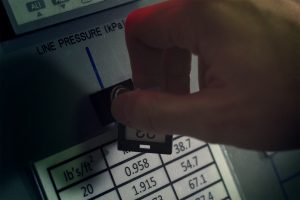The Innovative Technologies Shaping the Future of Urban Mobility
The world is constantly evolving, and technology has played a significant role in shaping our present and future. Urban mobility, in particular, has seen a significant transformation over the years. From traditional modes of transportation such as cars and buses to new and innovative technologies, the way we move around cities is rapidly changing. These advancements are not just limited to improving transportation efficiency but also aim to create sustainable and eco-friendly solutions. In this article, we will explore the innovative technologies that are shaping the future of urban mobility and their impact on the way we navigate and experience our cities.
The Rise of Electric Vehicles
With the increasing concerns about climate change and the carbon footprint of traditional vehicles, the rise of electric vehicles (EVs) is a game-changer in the world of urban mobility. EVs use electricity stored in rechargeable batteries instead of fossil fuels, making them a more sustainable and eco-friendly alternative to traditional cars. With developments in battery technology, EVs are becoming more efficient, affordable, and reliable, making them a viable option for daily commutes in urban areas.
Shared Mobility Services
The concept of car ownership is slowly being replaced by shared mobility services in urban areas. With the rise of ride-sharing platforms such as Uber and Lyft, people can now easily access transportation on-demand without owning a car. This not only reduces the number of vehicles on the road but also helps in reducing traffic and air pollution. Additionally, bike-sharing programs have also gained popularity in cities, providing a more sustainable and healthier mode of transportation.
Autonomous Vehicles
One of the most talked-about technologies in recent years is the development of autonomous or self-driving vehicles. These vehicles use a combination of sensors, cameras, and advanced software to navigate without human intervention. While still in the early stages of development, autonomous vehicles have the potential to significantly impact urban mobility in the future. They have the potential to reduce human error and improve traffic flow, reducing commute times and making transportation more efficient.
Aerial Mobility
As urban areas become more densely populated, ground transportation faces a lot of challenges. This has led to the development of aerial mobility solutions such as flying cars and drones. Flying cars, also known as vertical take-off and landing (VTOL) vehicles, use electric or hybrid propulsion systems to take off and land vertically. Drones are also being explored for various purposes, such as delivery and transportation of goods and services, especially in urban areas with heavy traffic.
Improving Public Transportation Systems
Despite all the advancements in individual transportation, public transportation remains a crucial aspect of urban mobility. However, traditional public transportation systems are facing serious challenges, such as overcrowding and outdated infrastructure. To address these issues, cities are investing in smart public transportation solutions, such as intelligent traffic management systems, real-time tracking of buses and trains, and contactless fare collection systems. These technologies not only improve the efficiency and reliability of public transportation but also provide a more comfortable and convenient experience for passengers.
The Role of Data and Connectivity
Innovative technologies are not only shaping the hardware of urban mobility, but also the way in which data and connectivity are utilized. With the rise of the Internet of Things (IoT), transportation systems are becoming more connected and data-driven. This allows for real-time monitoring and analysis of traffic patterns, helping authorities to better manage and optimize the flow of traffic in cities. It also enables the development of predictive models, which can help in anticipating and mitigating potential disruptions.
Conclusion
The future of urban mobility is undoubtedly exciting, with new technologies being developed and implemented every day. These innovations are not only making transportation more efficient and convenient but also creating a more sustainable and eco-friendly urban environment. However, the successful integration of these technologies depends on the cooperation and collaboration of governments, city planners, and technology companies. With a collective effort, the future of urban mobility has the potential to transform our cities and make them more livable and accessible for all.










